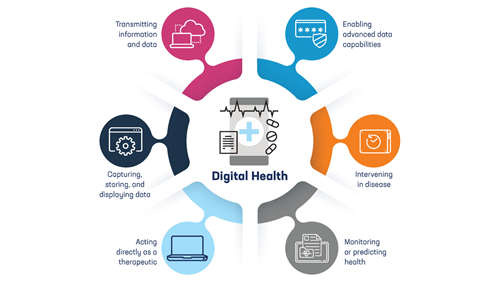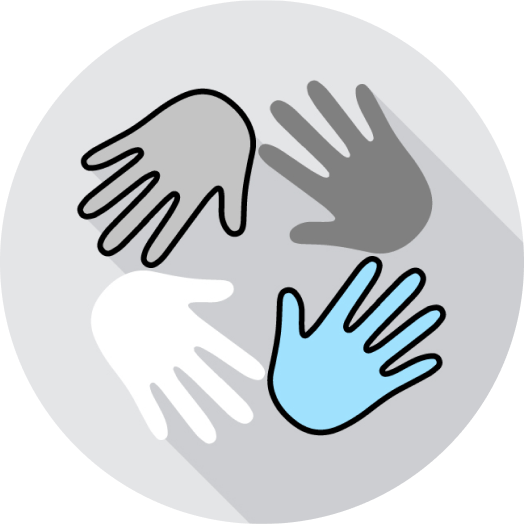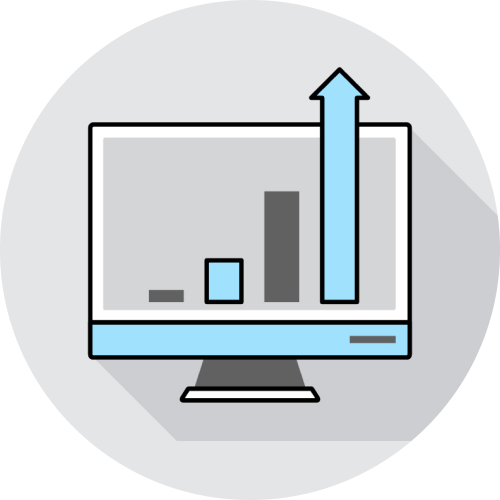What is Digital Health?

Digital health is the application of digital health tools (DHTs) in health care and drug development. A DHT is a system that uses computing platforms, connectivity, software, and/or sensors, for health care and related uses and can encompass a wide variety of modalities including, but not limited to, digital therapeutics, wearables, mobile phone applications, electronic medical records (EMRs), online patient portals, artificial intelligence (AI) and machine learning (ML), and telehealth and telemedicine platforms.
Ultimately, DHTs can allow patients and providers to manage health and wellness more efficiently within the health care system, with the goal of improving patient outcomes.

The Journey Through a Technology-driven Health Care System
The impact of technology is evident throughout today’s health care system. Patients can use DHTs for proactive disease prevention, maintaining a healthy lifestyle and seeking information about their health. Patients can also use DHTs to communicate with health care providers (e.g., telehealth), as treatments, as therapeutic aids (eg, digital medication reminders), for personalized monitoring, and for data collection, all of which could help improve patient outcomes.
Health care providers can also utilize DHTs at various stages to enhance a patient’s journey through the health care system. Data from electronic medical records (EMRs) or directly from the patient increases transparency and offers actionable insights, facilitated by tools such as clinical decision support (CDS) software, to assist providers in patient care. The evaluation of data on treatment response or adherence allows providers to identify and overcome potential barriers for patients.
Symptom Onset or Proactive Prevention Step
Patients can use technology to increase awareness of their general health, initiate healthy lifestyle changes, maintain healthy habits or learn about symptoms they are experiencing.
Wearables
Wearables (e.g., smartwatches) can provide patients immediate feedback on their health and behaviors, enabling awareness and subsequent behavioral changes.
Home Monitoring Devices
Home monitoring devices (e.g., blood pressure cuff, glucometer) allow patients to monitor their own health status and identify potential symptoms for provider follow-up.
Online Platform or Social Media Support Groups
Patients can use trusted and reliable websites or online platforms to help identify their symptoms or seek general disease information or use social media to seek support and engage with their health.

The Value to the Patient
These tools enable patient awareness and engagement with their health and speed up their point of contact with the health care system.

The Trend
The current use of digital health apps and wearables for preventative health care saves the U.S. health care system an estimated $7 billion per year, driven by reduced hospitalizations (IQVIA 2017).
Doctor’s Appointment
Patients and providers can use DHTs to provide access to health care services. They can also use digital check-in tools to maximize time during the appointment.
Online Platforms, EMRs and Clinical Decision Support Software
Secure online portals allow patients and providers to make appointments, message each other in between visits and review their EMR. Additionally, CDS software can enhance decision making for providers by presenting pertinent patient-specific data and recommendations.
Telehealth
Patients can schedule and attend remote visits with their provider, allowing more convenient access to care to complement regular in-person visits.
Wearables and Home Monitoring Devices
Patients can share data (eg, sleep data, heart rate data) from wearables or home monitoring devices with their providers, which can help inform conversations about their health status.

The Value to the Patient
DHTs have the potential to streamline care where appropriate, increase access in underserved areas and save time and costs for patients and providers. In fact, the cost to patients for taking time off work, and traveling to and waiting for in-person appointments is around $89 billion a year in total lost time and wages (Altarum 2019).

The Trend
Employers are increasingly offering telehealth services—93% of organizations offer a telemedicine or telehealth benefit to their workers, up from 75% in 2019 (SHRM 2022).
Diagnoses
DHTs can be used to confirm or complement a diagnosis or collect data to facilitate diagnoses.
Digital Biomarkers and Digital Diagnostics
Patient health can be monitored with DHTs that collect digital biomarkers (eg, characteristics or objectively measured indicators of patient health or disease, such as heart rate collected from DHTs), which can help facilitate diagnoses.
AI/ML in Medical Imaging
AI/ML can support providers in their analysis of medical imaging and allow for more rapid and accurate diagnoses of cancers and other diseases.
Online Platforms and Digital Networks
Patients with undiagnosed diseases can use verified online platforms and digital networks to find other patients with similar experiences to assist in understanding their symptoms.

The Value to the Patient
The diagnostic journey for many patients can be reduced, saving time and costs, and allowing for earlier detection of diseases. This is particularly helpful for rare diseases where an accurate diagnosis can take more than 7 years after symptom onset (NORD 2020).

The Trend
- In a 2020 analysis, more than half of FDA-approved products were supported by biomarker data (Gromova 2020).
- In a 2020 survey, 30% of radiologists used AI in their practice, and of those not using, 20% planned to purchase AI tools in the next 1 to 5 years (Allen 2021).
Intervention
Patients can benefit from prescribers using DHTs to streamline the administrative process or may obtain an intervention that is a digital therapeutic, implantable, or companion app, or use DHTs for disease management. Health care providers may also refer patients to clinical trials, including remote clinical trials using DHTs, to facilitate enrollment and participation.
Electronic Benefits Verification and Prior Authorization
Prescribers can electronically and in real time verify a patient’s insurance benefits to expedite access to treatment or electronically process prior authorization, saving time for both patients and providers.
Decentralized Clinical Trial Participation Tools
Using DHTs such as telehealth, remote patient monitoring and electronic clinical outcomes assessments allows research to occur away from the clinical trial sites. Participants can use electronic forms to consent to clinical trial participation and use DHTs to participate in hybrid or decentralized clinical trials.
Companion Apps
In conjunction with an intervention, a patient may use a companion app (eg, behavioral therapy, digital journal) to help manage their disease.

The Value to the Patient
Patients experience increased efficiencies in prescribing and have access to a broader variety of therapies, reducing barriers to care and allowing for more thoughtful engagement with their health. Patients who would have been unable to participate in a traditional clinical trial may be able to participate in a decentralized clinical trial, expanding treatment options and increasing the representativeness of clinical trials.

The Trend
The COVID-19 pandemic greatly increased the adoption of decentralized clinical trials—in a recent survey, 100% of biopharmaceutical manufacturer and contract research organization respondents expected virtual trials to be a major component of their portfolios (up from 38% in 2019)—and the regulatory environment is adapting to support such studies (McKinsey 2021)
Taking and Managing the Medicine
Patients can use DHTs to assist in medication management.
Digital Therapeutics
Patients can use evidence-based therapies that may be connected to a sensor or independent mobile apps or computer software programs to prevent, manage or treat their disease.
Electronic Diaries and Disease Management Platforms
Patients can use mobile apps or electronic platforms to track medicine intake, calculate doses to be administered and sometimes engage providers to improve self-management and clinical outcomes.
Medication Reminder Apps
Patients can use mobile apps to remind them to take medications and track adherence.

The Value to the Patient
DHTs can increase adherence to medications and potentially reduce medication errors (Quisel 2019; Baumann 2019).

The Trend
As of November 2021, at least 25 digital therapeutics have been granted market authorization globally through regulatory processes and another 23 are commercially available; an additional 89 are in earlier stages of development and evidence generation (IQVIA 2021). Further, an increasing number of physicians are incorporating digital therapeutics in their practice, and health plans are beginning to offer reimbursement for these interventions (AMA 2022).
Monitoring of Symptoms and Disease Management
Patients and clinicians can use DHTs to monitor symptoms and evaluate treatment progress.
Wearables
Patients can use wearables to alert themselves to emergency situations (eg, an excessively high or low heart rate) for potential doctor follow-up.
Home Monitoring Devices
Patients can use home monitoring devices to track signs and symptoms of their disease and to share data with their provider.
Online Platforms and Social Media Support Groups
Patients can use secure online platforms or portals to provide health updates to their provider in between visits. Patients may join and be empowered through disease-specific social media support groups.

The Value to the Patient
DHTs can support patients in their treatment journey and provide treatment feedback, allowing patients to remain engaged in their care.

The Trend
The percentage of physicians using remote monitoring services grew from 12% in 2016 to 30% in 2022 (AMA 2022). Total funding for remote patient monitoring more than doubled in 2020 ($941M) from 2019 ($417M) (StartUp Health 2021).



